automated
Docker
deployment
what
What we are trying to accomplish is to create a mechanism that gives developers, testers and operations a self-service mechanism for deploying Docker-based solutions. In this context, AL and it collection of 50+ containers is considered a single solution.
why
As an organization, we are not ready to deploy pieces of a solution individually. We need a gating mechanism that allows users to deploy a unique combination of containers as a single entity. QA, in particular, needs to be in complete control of what is deployed in order to better associate defects to the correct build.
how
- tie in the generation of a deployment fragments with automated Bamboo builds
- create a Docker Compose registry that holds the descriptors that are assembled as a result of the individual container builds
- provide self-service deployment of a particular descriptor via Rundeck, the open-source job scheduler
Sequence
- Bamboo completes with a successful test
- Bamboo makes a REST call to publish the current Docker Compose fragment to the compose registry
- User selects the desired descriptor to deploy from the Rundeck web interface
- Rundeck executes the deployment logic, most likely via an SSH command that fires off a Docker container that does the actual deployment
example
PUT /fragment HTTP/1.1
Accept: application/json
Content-Type: application/json
User-Agent: Java/1.8.0_72
Host: localhost:9090
Connection: keep-alive
Content-Length: 334
{
"fragment":"base64 encoding of the Transmission YML",
"applications":["TLO GE","TLO EE"],
"releases":["Milestone"]
}example
/descriptor/application/TLO GE/Milestone/1
transmission-data:
image: busybox
container_name: transmission-data
command: 'true'
volumes:
- /var/lib/transmission-daemon
transmission:
image: dperson/transmission
container_name: transmission
volumes_from:
- transmission-data
restart: always
net: host
ports:
- 9091:9091
- 51413:51413
environment:
TRUSER: admin
TRPASSWD: admin
TIMEZONE: UTCexample
PUT /fragment HTTP/1.1
Accept: application/json
Content-Type: application/json
User-Agent: Java/1.8.0_72
Host: localhost:9090
Connection: keep-alive
Content-Length: 334
{
"fragment":"base64 encoding of the Plex YML",
"applications":["TLO GE","TLO EE"],
"releases":["Milestone"]
}example
/descriptor/application/TLO GE/Milestone/2
transmission-data:
image: busybox
container_name: transmission-data
command: 'true'
volumes:
- /var/lib/transmission-daemon
transmission:
image: dperson/transmission
container_name: transmission
volumes_from:
- transmission-data
restart: always
net: host
ports:
- 9091:9091
- 51413:51413
environment:
TRUSER: admin
TRPASSWD: admin
TIMEZONE: UTC
plex-data:
image: busybox
container_name: plex-data
command: 'true'
volumes:
- /config
plex:
image: timhaak/plex
container_name: plex
restart: always
net: host
ports:
- 32400:32400
volumes_from:
- plex-data
- bittorrent-sync-data
volumes:
- /mnt/nas:/dataexample
PUT /fragment HTTP/1.1
Accept: application/json
Content-Type: application/json
User-Agent: Java/1.8.0_72
Host: localhost:9090
Connection: keep-alive
Content-Length: 334
{
"fragment":"base64 encoding of the MySQL YML",
"applications":["TLO GE","TLO EE"],
"releases":["Milestone"]
}example
/descriptor/application/TLO GE/Milestone/3
transmission-data:
image: busybox
container_name: transmission-data
command: 'true'
volumes:
- /var/lib/transmission-daemon
transmission:
image: dperson/transmission
container_name: transmission
volumes_from:
- transmission-data
restart: always
net: host
ports:
- 9091:9091
- 51413:51413
environment:
TRUSER: admin
TRPASSWD: admin
TIMEZONE: UTC
plex-data:
image: busybox
container_name: plex-data
command: 'true'
volumes:
- /config
plex:
image: timhaak/plex
container_name: plex
restart: always
net: host
ports:
- 32400:32400
volumes_from:
- plex-data
- bittorrent-sync-data
volumes:
- /mnt/nas:/data
mysql-data:
image: busybox
container_name: mysql-data
volumes:
- /var/lib/mysql
- /etc/mysql/conf.d
mysql:
image: mysql
container_name: mysql
net: host
volumes_from:
- mysql-data
restart: always
ports:
- 3306:3306
environment:
MYSQL_ROOT_PASSWORD: sa
MYSQL_USER: mysql
MYSQL_PASSWORD: mysql
MYSQL_DATABASE: owncloudexample
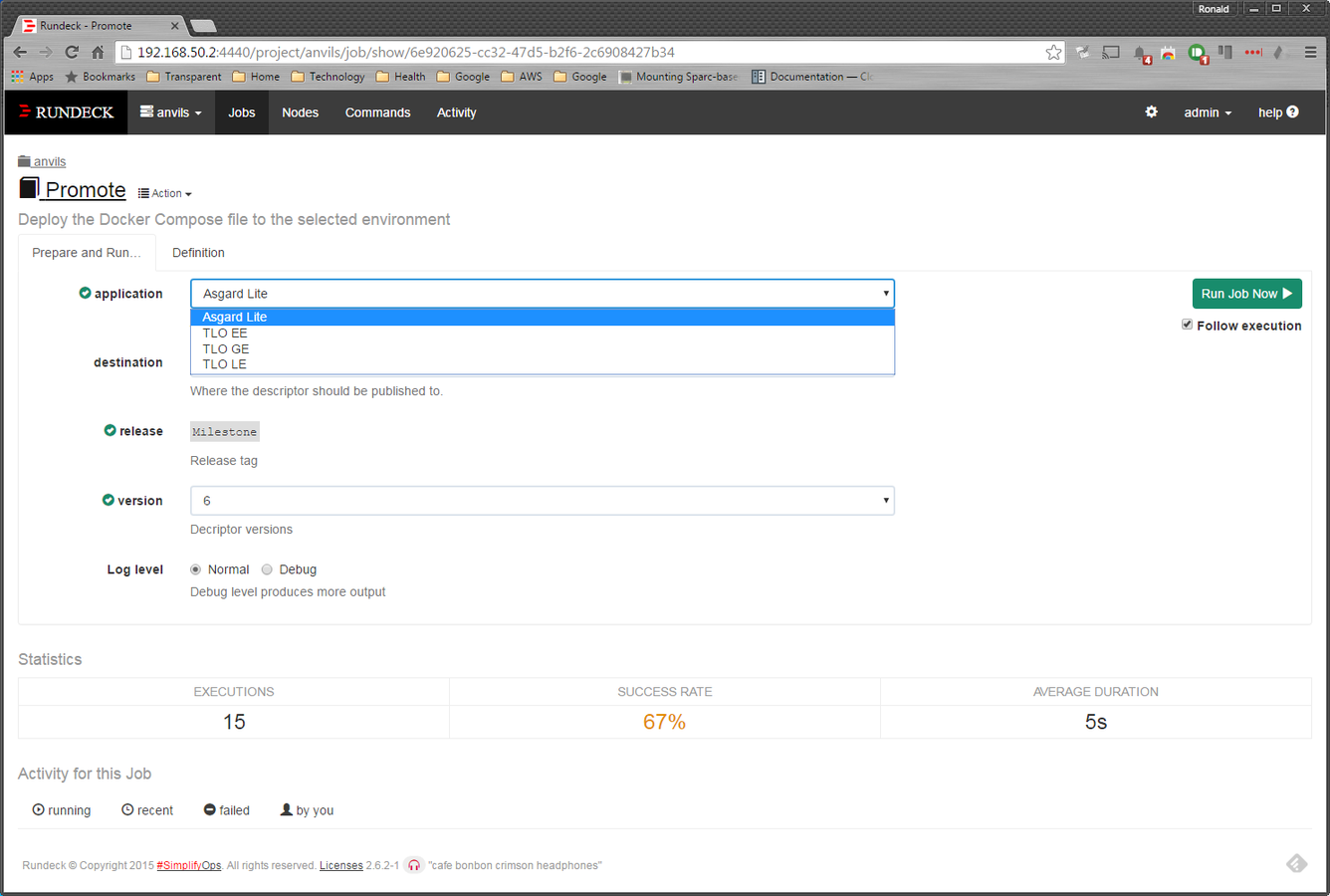
example
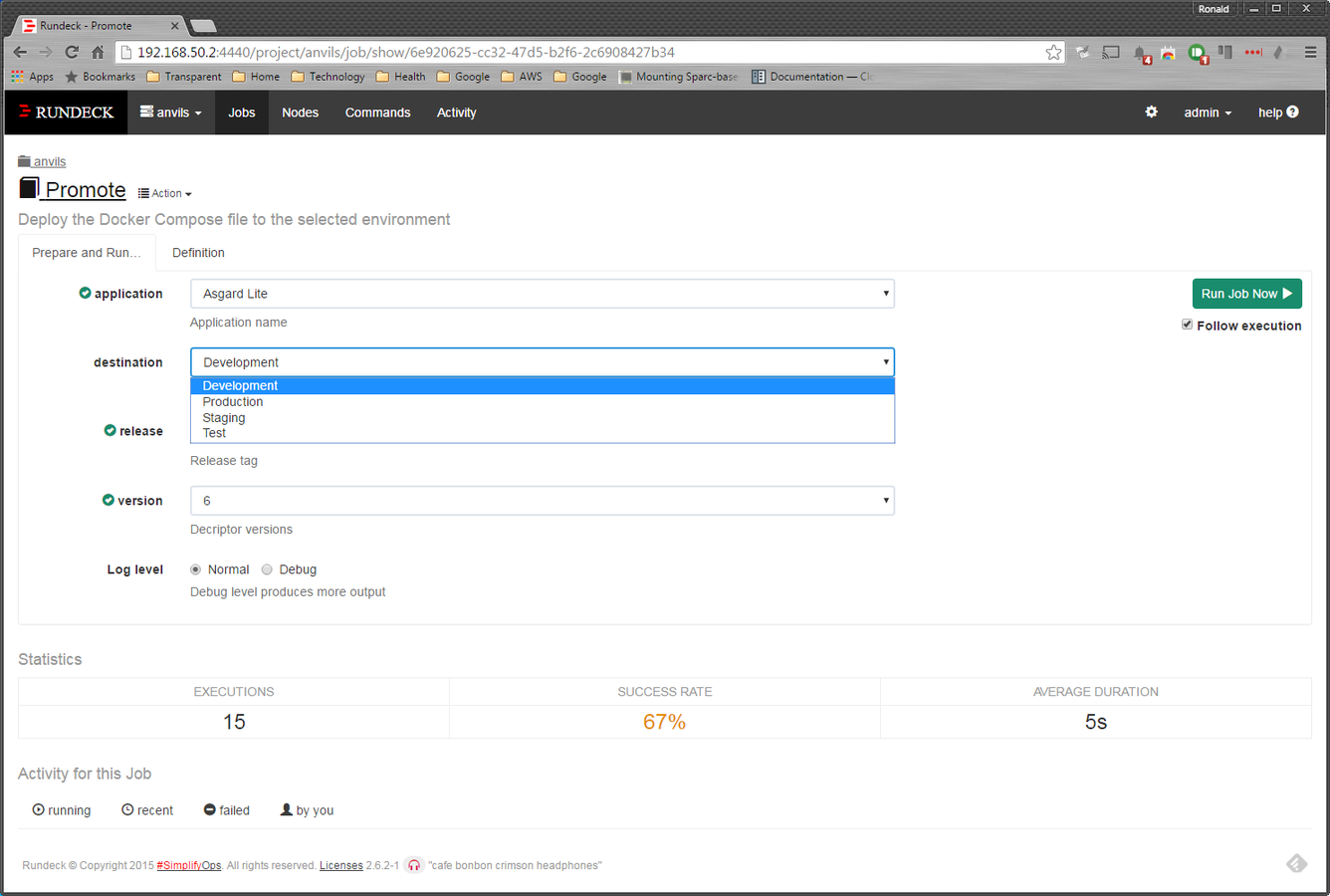
example
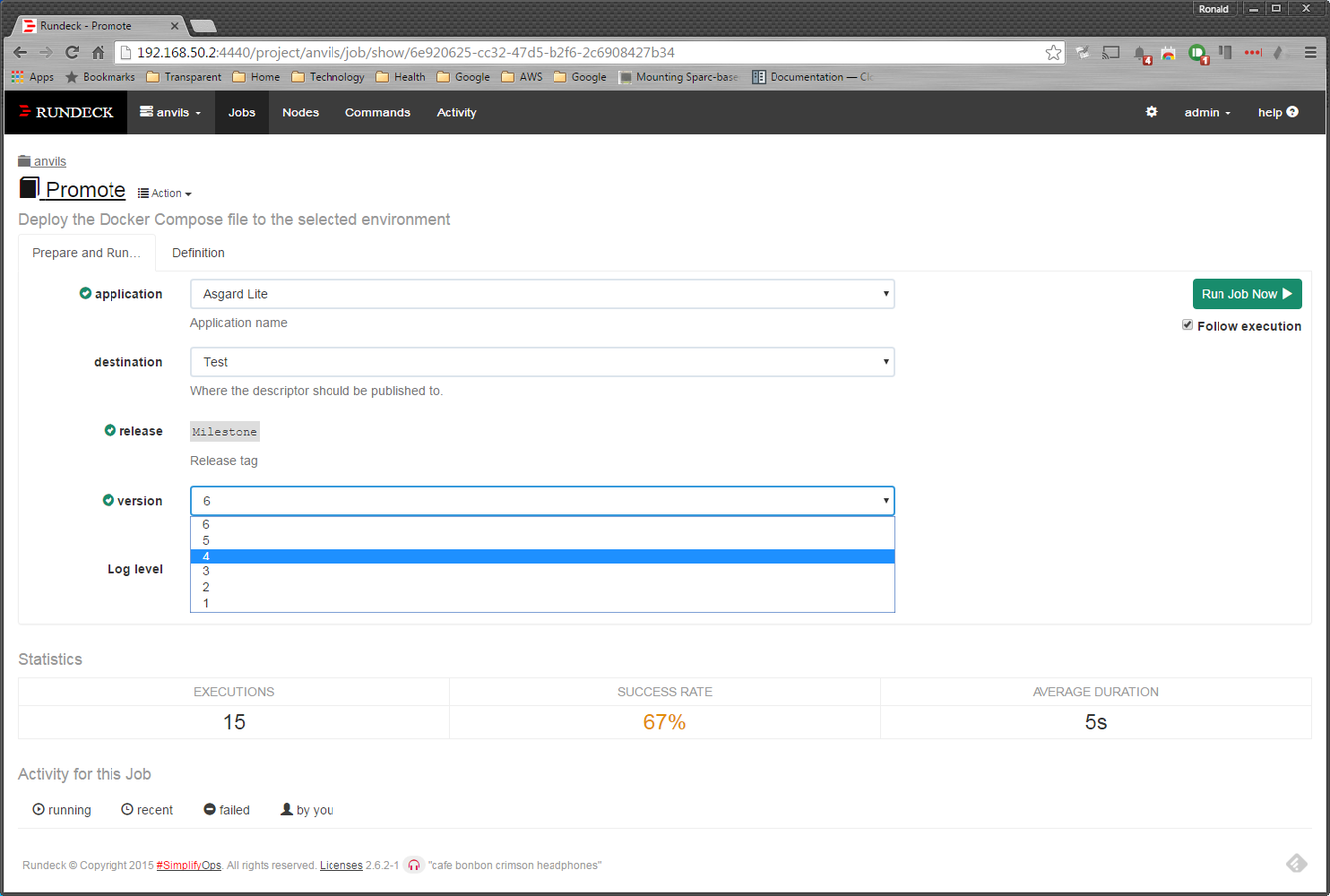
example
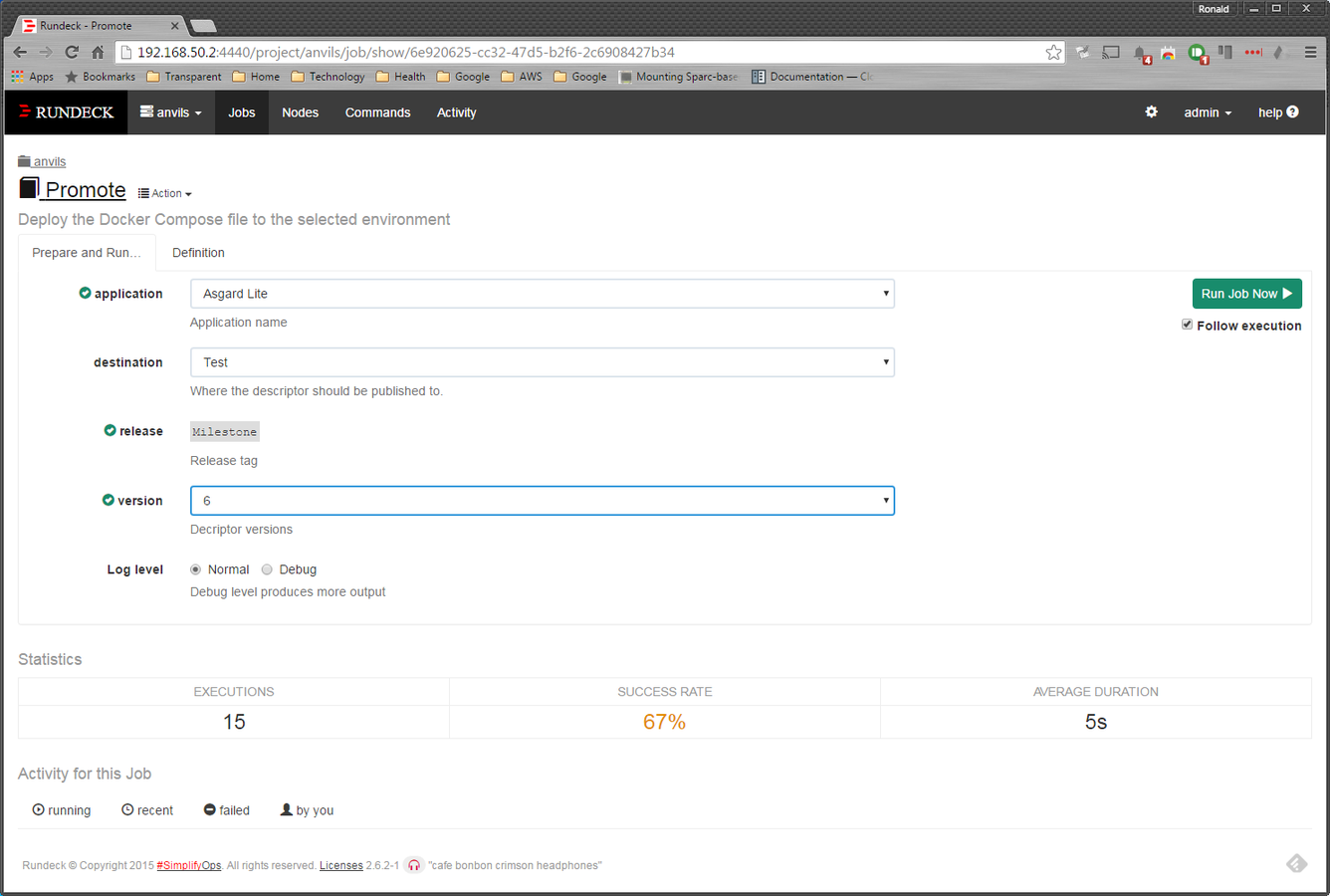
example

example

example
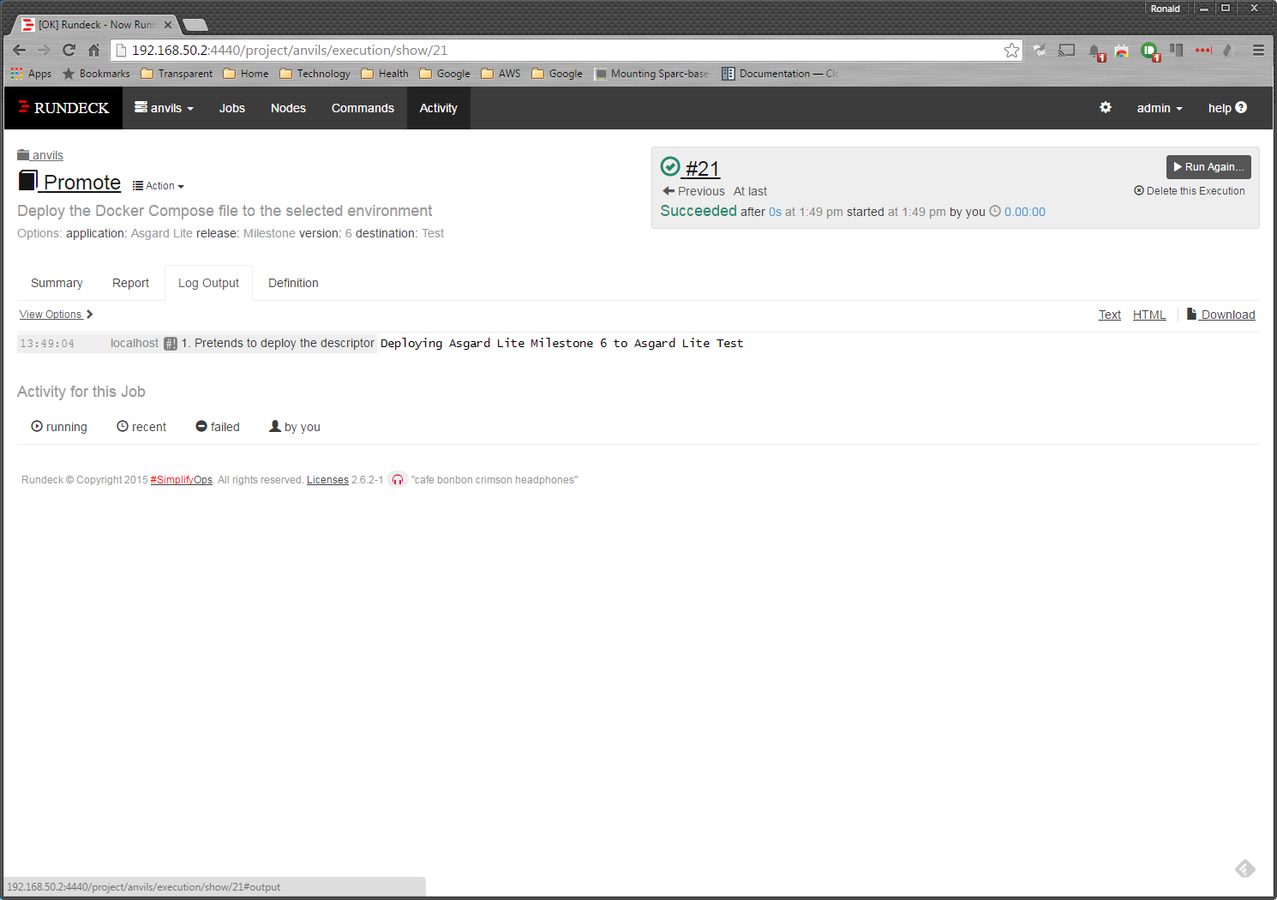
example
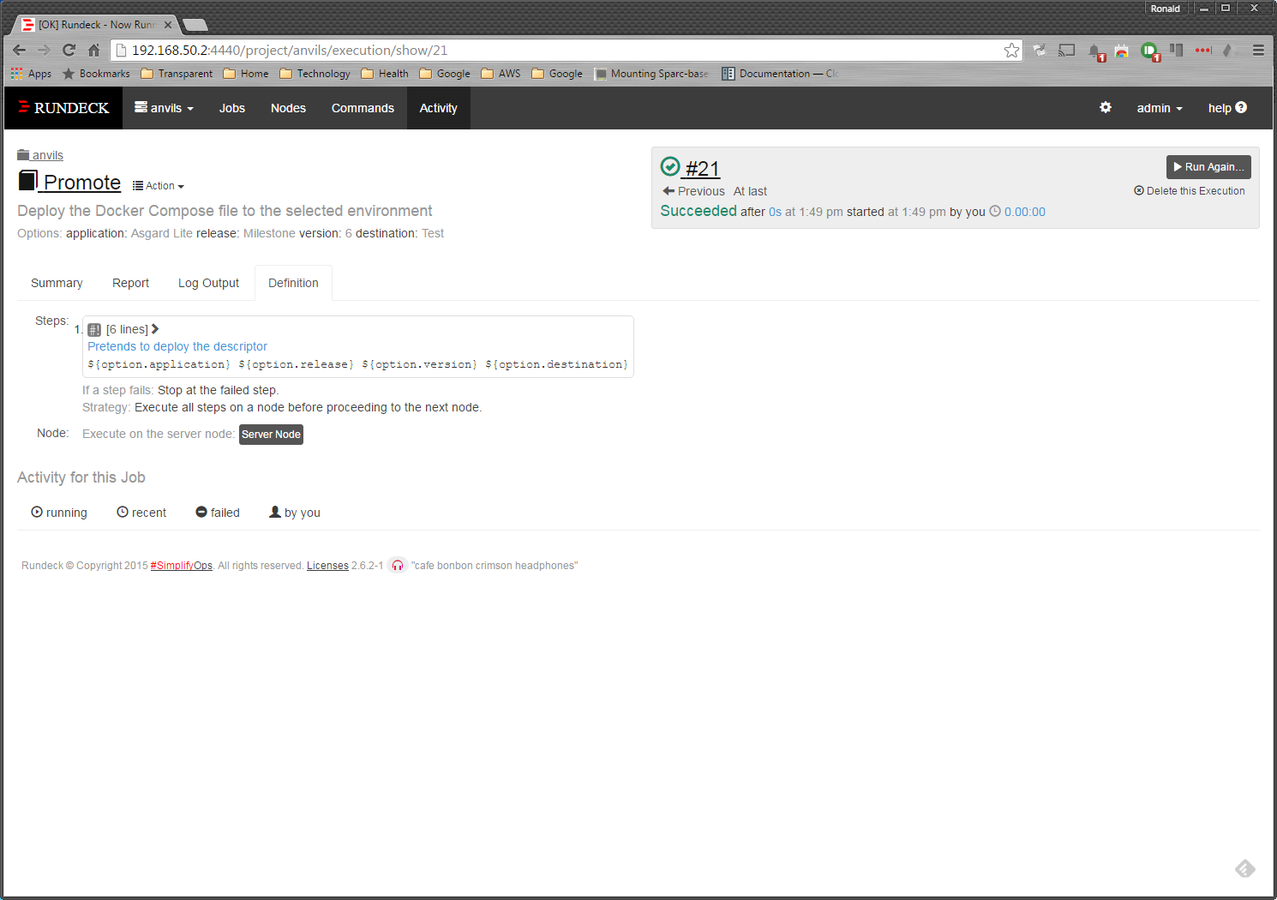
example
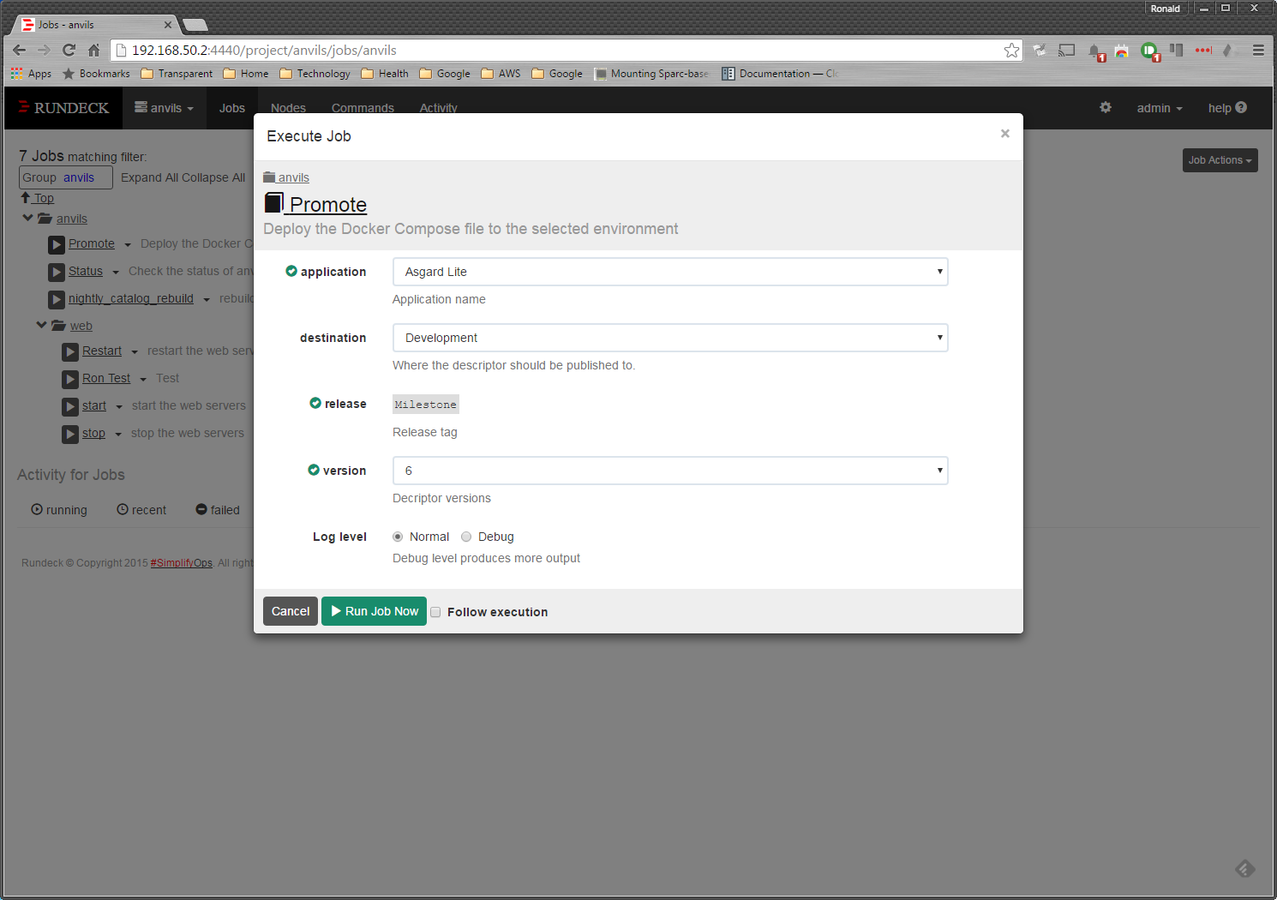
example
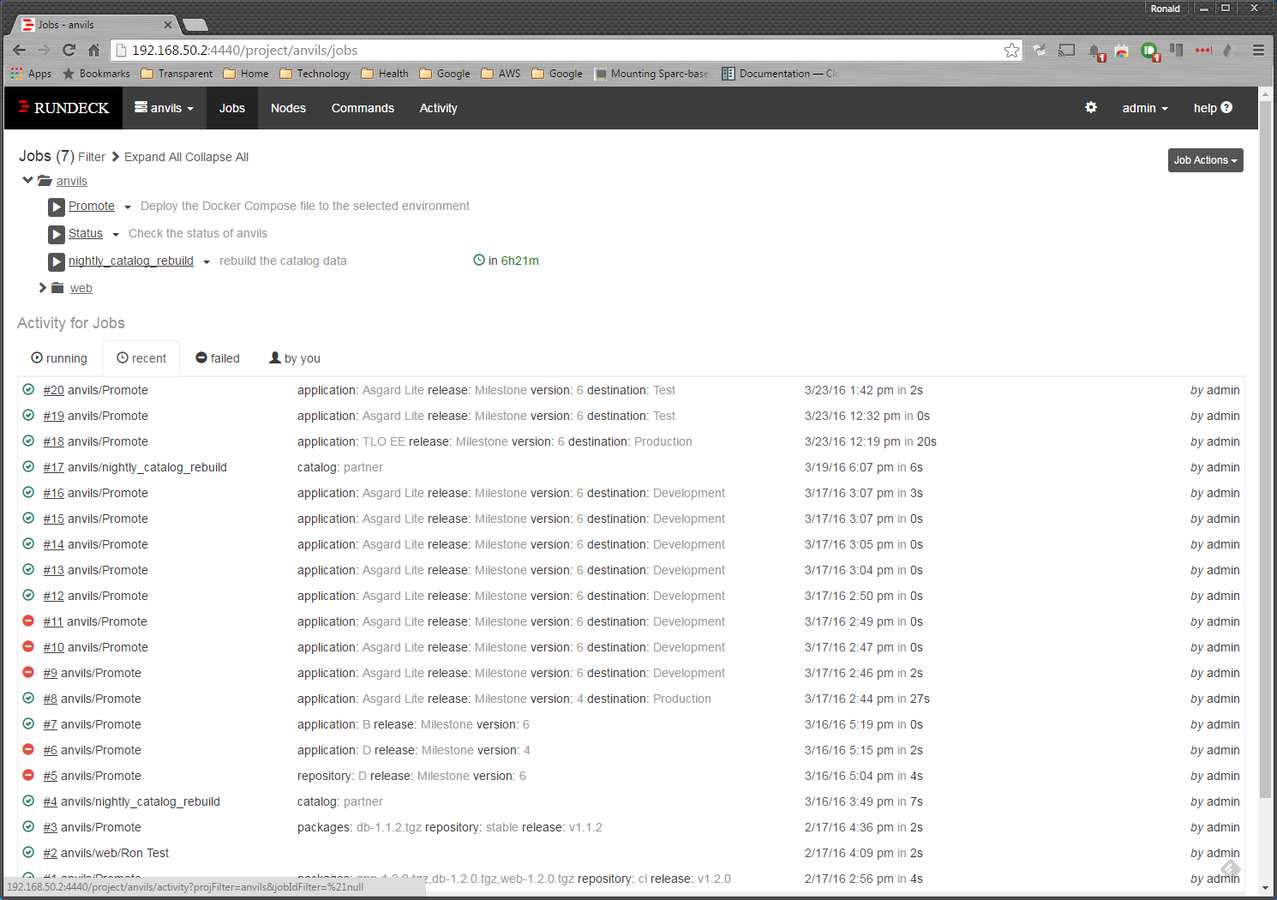
example

example
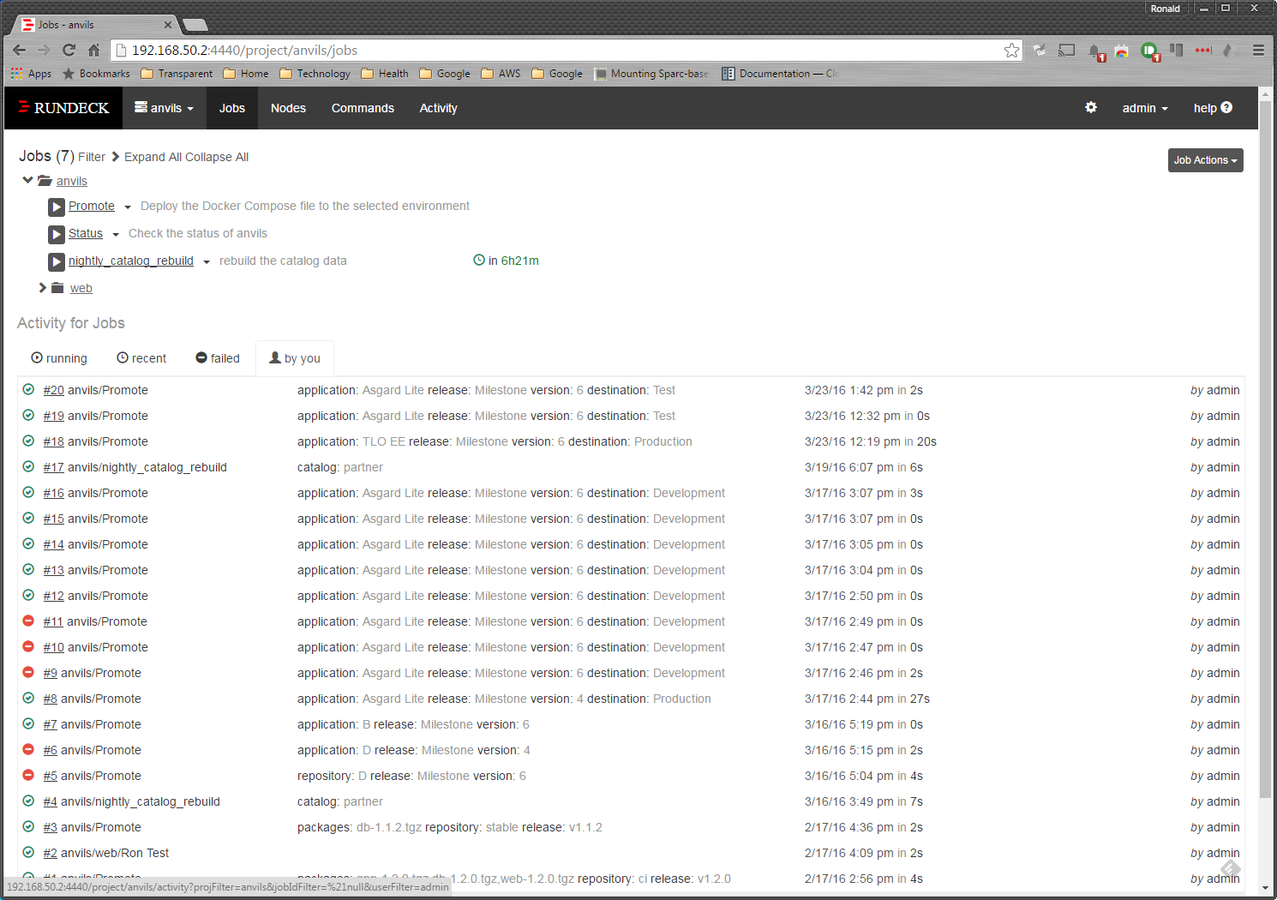
The Good
- Rundeck is off the shelf and under active development
- Rundeck can tie into LDAP for authentication
- We have some control over the UI
- Job execution is typically done via SSH so we can deploy Rundeck as a container
- Rundeck can use our existing MySQL infrastructure
- Docker Compose works both in development and AWS environments
- Docker Compose also works in Docker Swarm, if we decide to use that in development
The BAD
- I haven't figured out a way to make the development target actually work!
- How do I schedule on a particular developer's machine? Do we even need to?
- The job can "succeed" by sending the descriptor off to the scheduler but one or more containers might not actually start correctly. No feedback to the user after pushing the button. We need some sort of "all healthy" check.
The UGLY
- we don't have complete control over the Rundeck UI so it won't be pretty
- requires a homegrown Docker Compose registry, which we must maintain. I don't believe such a beast already exists out in the wild.
- we'll have to rig up all 50 Bamboo projects to send the descriptor to the registry
- need to investigate how Amazon ECS notifies us of deployment failures
- we would have to maintain the Rundeck container ourselves
next Steps
Do we continue down this path or is there something else we should investigate?